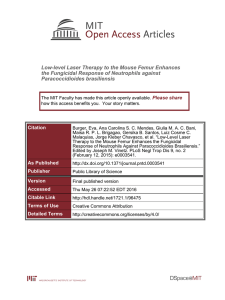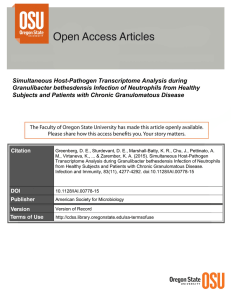profits - Learning
advertisement
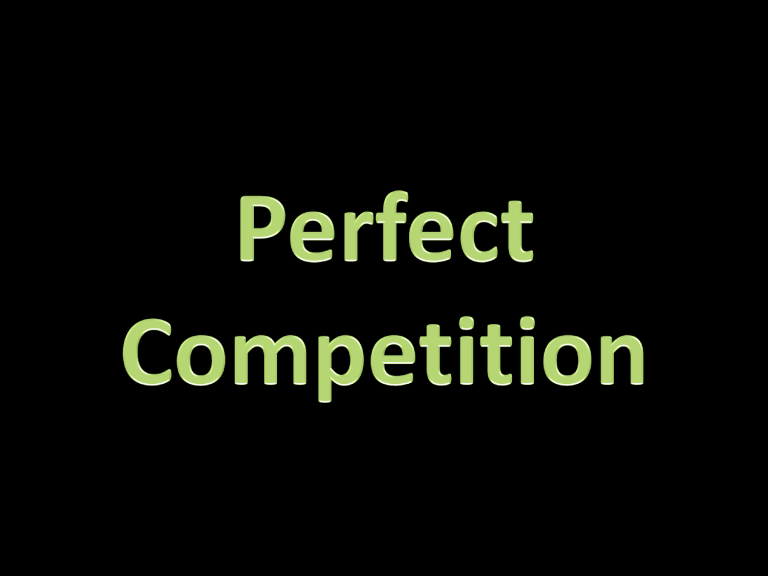
• Price determined by S & D • Price taker • Won’t charge higher or lower than market price • Horizontal (perfectly elastic) at market price. Market demand Individual firm Firms aim to maximise profit Two rules for profit-maximisation • shut-down rule • profit maximising rule The shut-down rule: a firm should produce only if total revenue is equal to, or greater than, total variable cost (which includes normal profit). Profit is maximised where marginal revenue (MR) is equal to marginal cost (MC). In summary… • When MR > MC, output should be expanded • When MR = MC, profits are maximised • When MR < MC, output should be reduced POINT a: MR (R10) MC (R4) R6 POINT POINTe:d: c: b:MR MR(R10) (R10)–––MC MC(R12) (R8) (R10) (R6)===R2 -R2 R4 R0 Profit Maximising Level Perfect Competition Normal profits: occur when total costs = total revenue. Minimum earnings required to prevent entrepreneur leaving and applying factors of production elsewhere. As ARprofit = AC, the firm earn an Normal earned, sincedoes all itsnot costs, including Profit isEAt maximised where MR Q This 2, break AR occurs = P 2 =at AC Q (C 2 = 2) MC = P2 2 aka even point self-employed resources, are fully economic profit. covered. 0CTR 2also E2Q=2 (TC) 2by E22EQTR 2 (TR) P 2 Xfound Q=2 =0P0P 2Q 2 - TC Can TC Cbe 0C Economic profits: profit that a business makes that is more than the normal profit. Economic profit occurs when total revenue > total costs. AKA excess profit, abnormal profit, supernormal profit or pure profit. Economic profit earned – above breakeven Profit isAtmaximised MR = P3 AtQ3This Q, AR 3, AR (P ) >atAC )CMC occurs =point. Pwhere 3 3and AC Q(C 3 =1= 1 0P3E3Q3 (TR) > 0C1MQ3 (TC) ===CP 13 X Q 0C TR Xfound Q33 == Profit 0P ETR 3= QC331-P1TC Can TC also be by13MQ Difference Economic E3M Economic loss: occurs when a firm makes less than normal profit. • I.e. price (AR) < AC Profit isAtEconomic maximised where MR = P3 3, 3AR occurs = (P Ploss 33) and =AC CAC Q 3 3(C – =P3=)3CMC 3 AtQThis Q , AR <at 0P3E3Q3 (TR) < 0C1MQ3 (TC) TR ===CP 33 X Xfound Q Q33 == 0C 0P E=TR 3Q Can TC also be by33MQ TC3 Difference Economic Loss P333C-3ME If a firm is making an economic loss, should they leave the market? Depends on average revenue (P) relative to average VARIABLE costs. If P < AVC, best to leave the industry. Allocative efficiency: a situation where it is impossible to reallocate the resources to make at least one person better off without making someone else worse off. Allocative inefficiency: it is possible to make at least one person better off without making someone else worse off. In such a case the welfare of society can be improved by reallocating the resources. Society’s welfare maximised when… P (OC of consuming extra unit) = MC (OC of producing extra unit) Are perfectly competitive firms allocatively efficient? • P = MR • Profit maximisation at MR = MC • Therefore they produce at P = MR = MC Productive efficiency: occurs when all the firms in the industry produce where their long-run average or unit costs are at a minimum. When this occurs – no waste of scarce resources. Perfectly competitive firms in equilibrium in the long run where average cost is at a minimum – thus productively efficient.
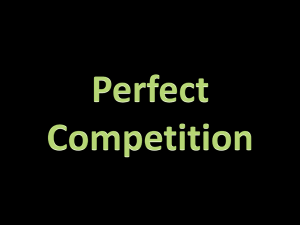


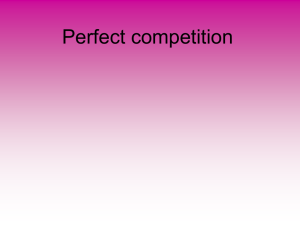

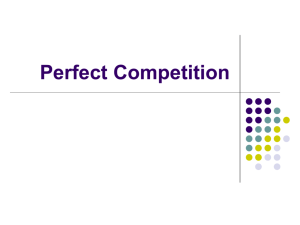

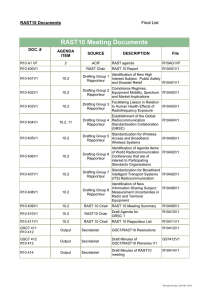
![This article was downloaded by:[CDL Journals Account] [CDL Journals Account]](http://s2.studylib.net/store/data/013404326_1-b9a302efb99cc4a7ab50e6166cf88d27-300x300.png)
